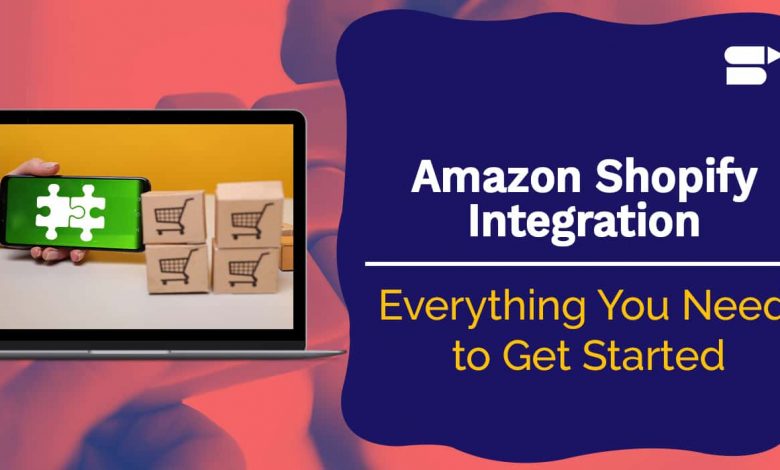How to Integrate Your Shopify Webstore With Amazon

Amazon and Shopify are a winning combination for your business. Multi-channel selling and brand exposure are key strategies in ecommerce to promote your products and increase sales.
Continue reading if you aren’t sure if it’s something you should consider or if you don’t know the best practices for synchronizing Amazon and Shopify selling platforms. Today we will discuss how, where, and why it is important to integrate your Shopify store with Amazon.
Benefits of Integrating Amazon with Shopify
The well-known Amazon marketing strategies RACE (Reach, Act, Convert, Engage) has been a huge success for millions of sellers. It stands for Reach, Action, Convert, Convert, and Engage. Integration between Amazon and Shopify can be achieved quickly and offers many benefits. Here are some of the most important:
Brand visibility
Your brand’s visibility can be increased by promoting your products through a popular channel like Amazon. This will help you attract more customers. Amazon’s Brand Registry can be used to ensure that your brand is always protected and improved. Your store can gain a competitive edge by importing inventory from Shopify to Amazon, and keeping it in sync.
Reports and notifications
Shopify’s selling platform dashboard allows you to generate detailed reports that include data from Amazon channels, including sales reports, customer data reports and inventory status. You can also receive notifications directly to Shopify via Amazon orders.
Inventory control
It is easy and painless to manage your inventory in your store or secondary selling channel. The automated processes of monitoring, updating, synchronizing and monitoring your inventory will reduce the time it takes to add products and variants. You can also manually choose the number of products that you want to show on Amazon.
Order Management
Once you have integrated Amazon orders with Shopify, all orders will sync automatically. You can view all orders in one dashboard, or go to the Orders page from your Shopify admin panel. These orders are listed under your listings and marked as Amazon. You can choose to fulfill the order and mark it as such on Amazon. Order management lets you fulfill, process and refund orders that come from your secondary channel.
Automatic product sync
You can submit products to Amazon through the Listings page in your Shopify admin. You can add the desired quantity to each product variant. Additionally, you can use inventory tracking settings on Amazon to sync your product inventory. You can choose to allow customers access to out-of-stock products.
Conversion optimization
You can submit products to Amazon through the Listings page in your Shopify admin. You can add the desired quantity to each product variant. Additionally, you can use inventory tracking settings on Amazon to sync your product inventory. You can choose to allow customers access to out-of-stock products.
Optimizing Beyond Amazon and Shopify
The first step in multi-channel growth hacking is connecting your Shopify store with Amazon. Still, you will need to optimize inventory control and warehousing. You will also need to increase sales via other channels than Amazon and eBay.
Shopify is a powerful selling platform but it can’t manage large volumes of inventory for multi-channel retailers or wholesalers. There are issues with sync, visibility and real-time visibility when importing Shopify products through Amazon. You can also pull the data from your operation and view its performance.




